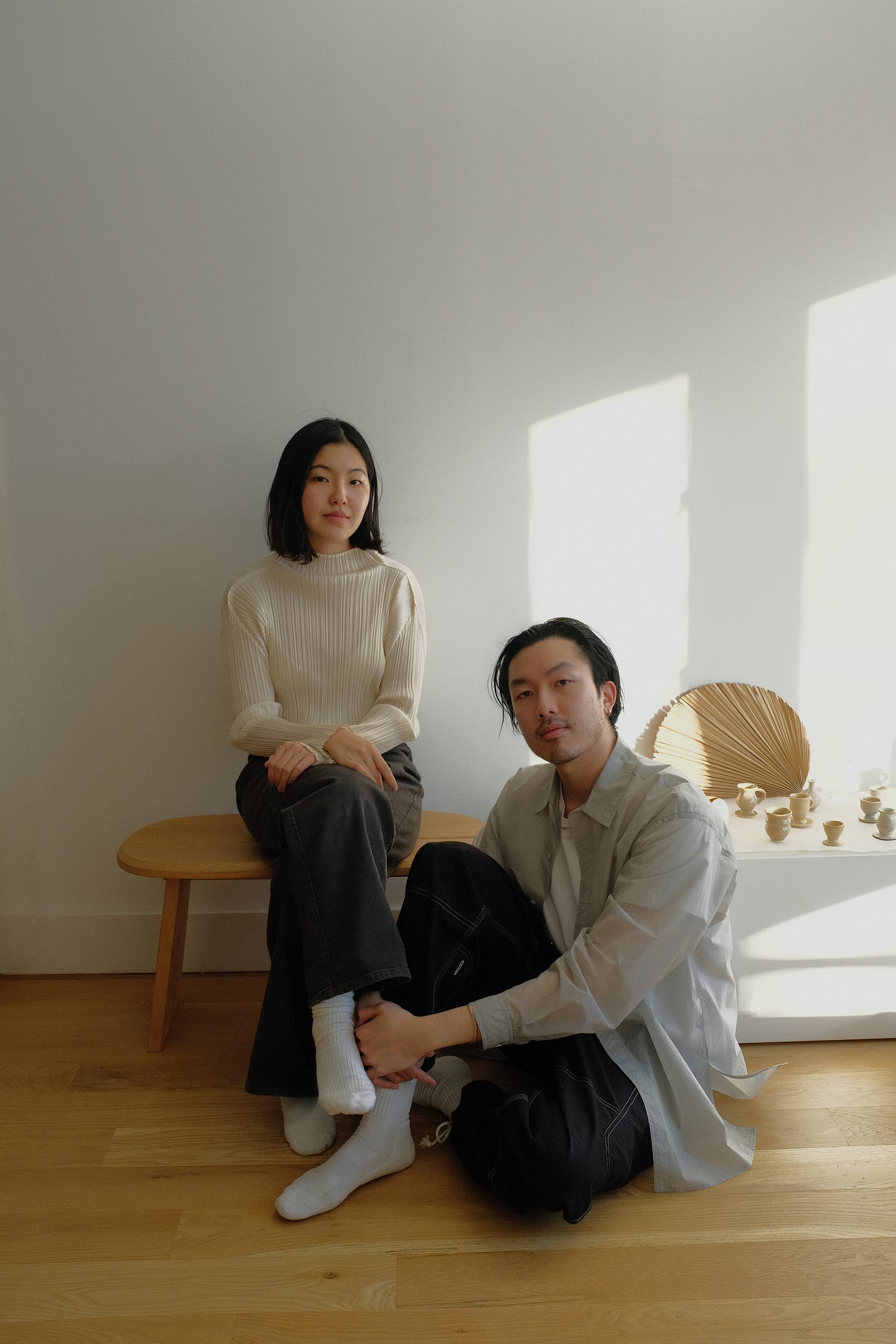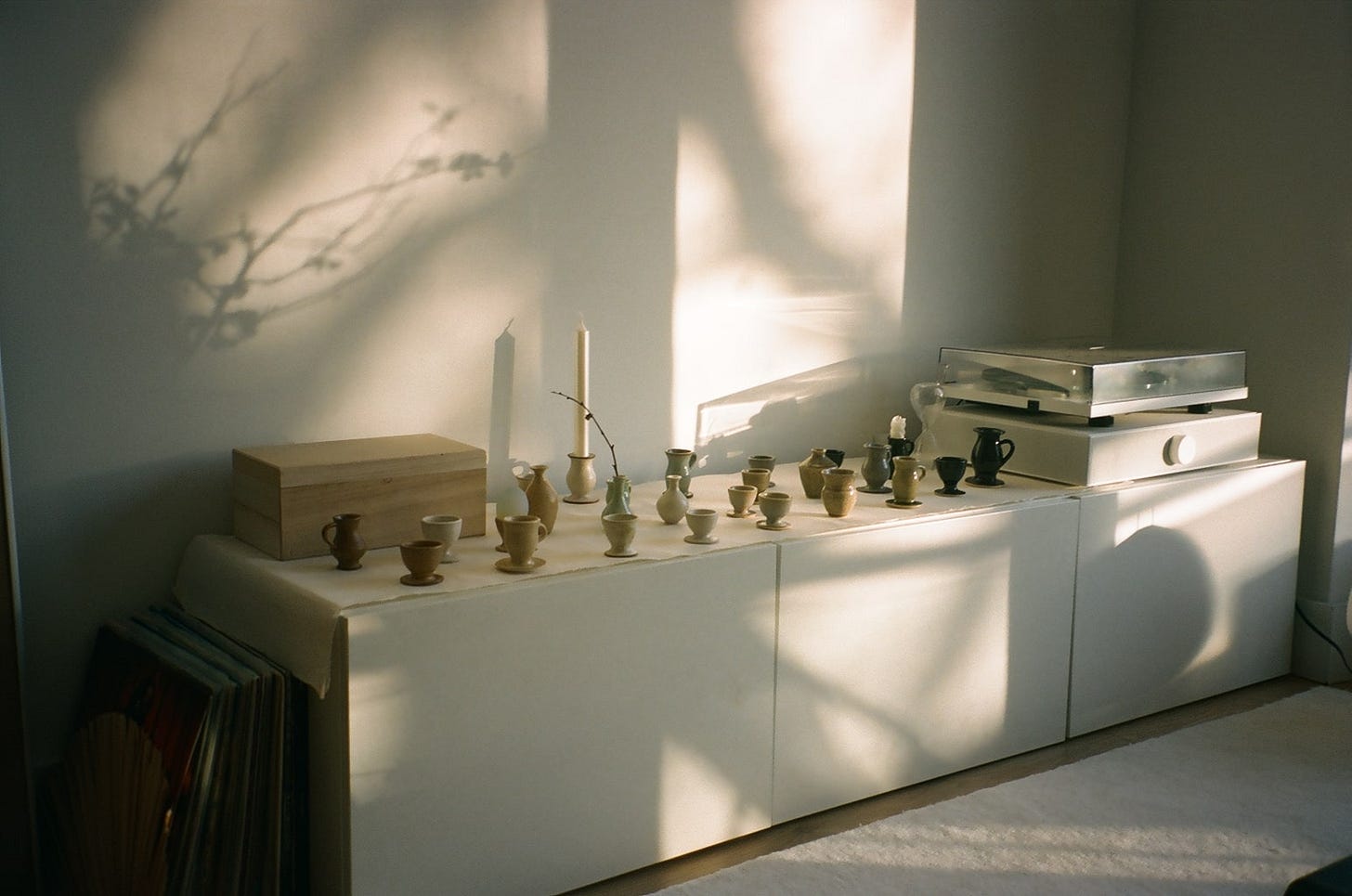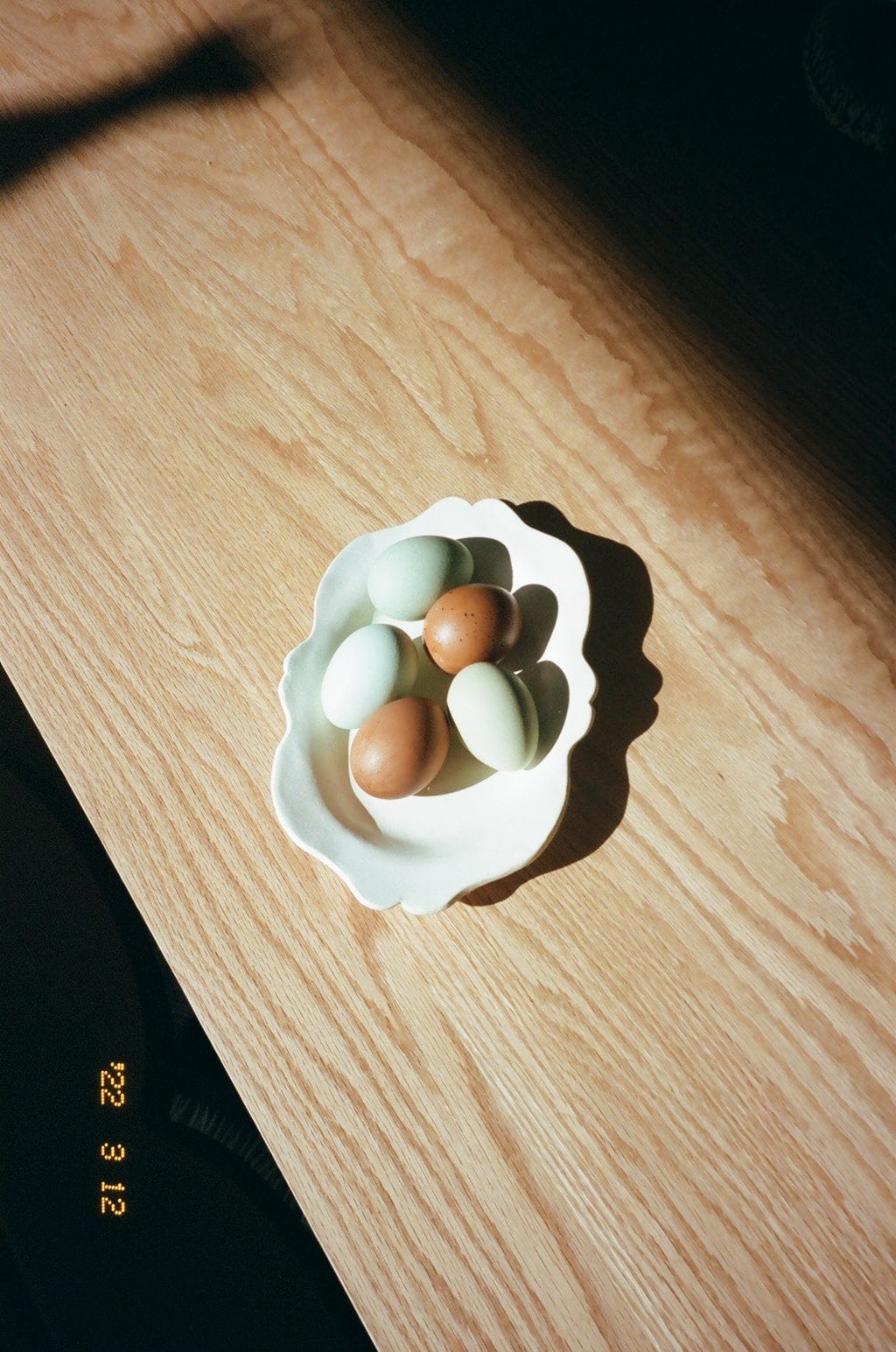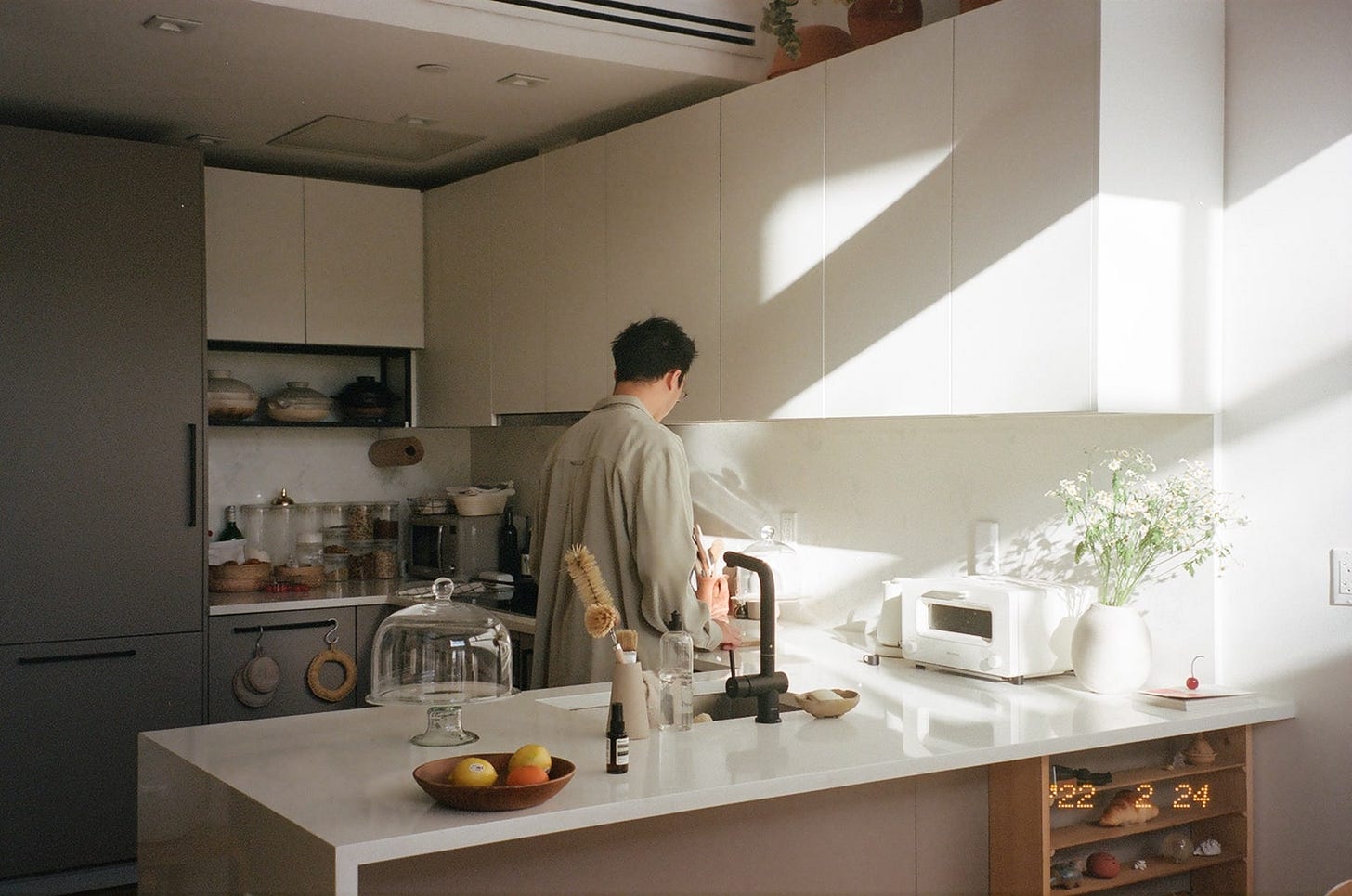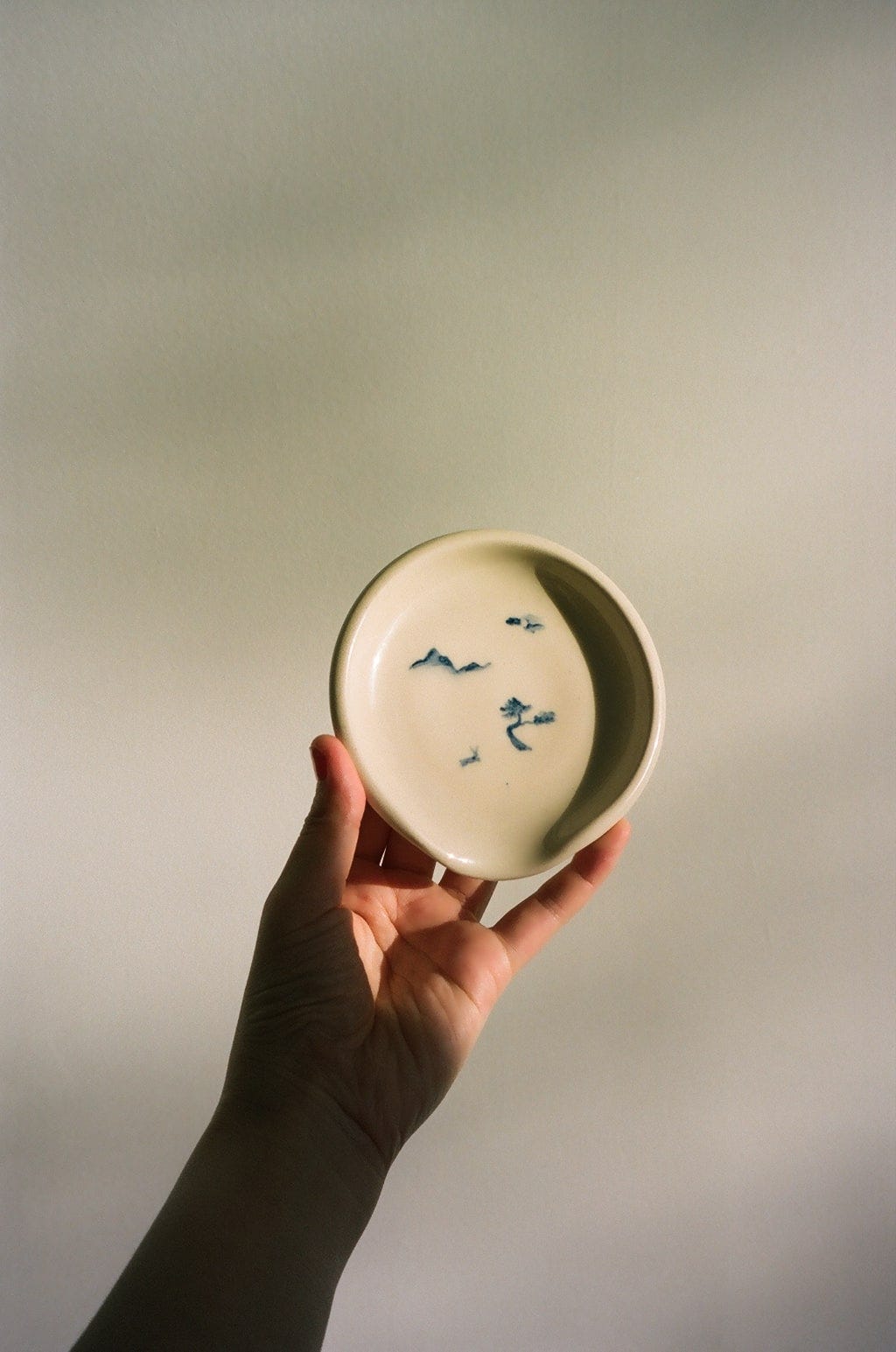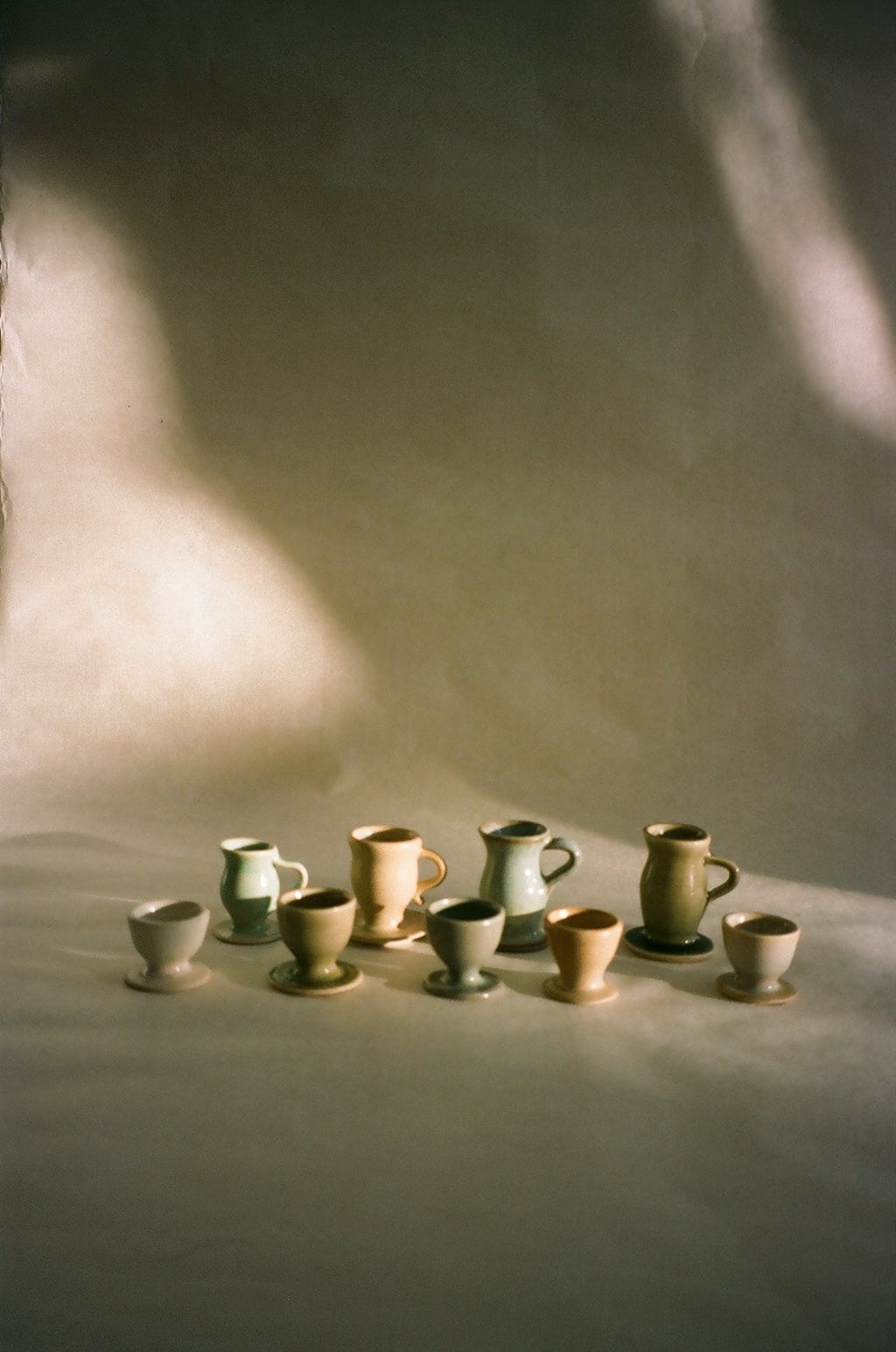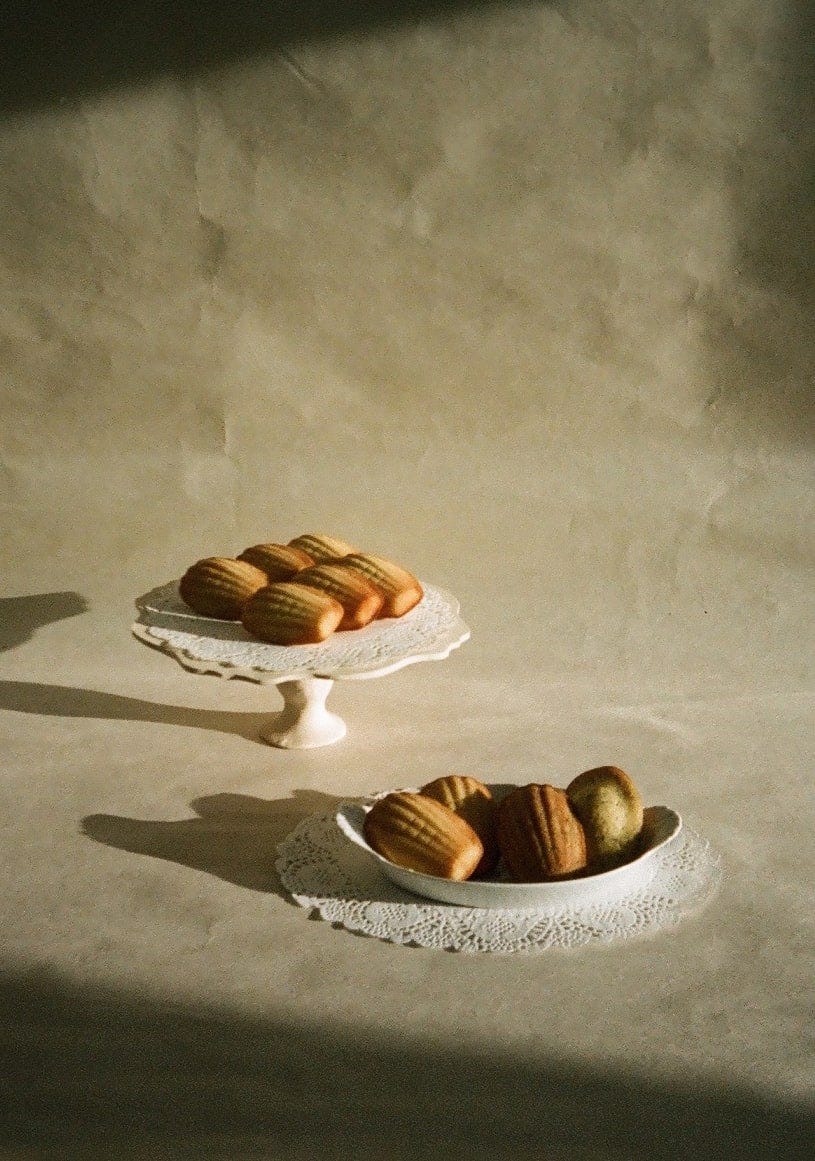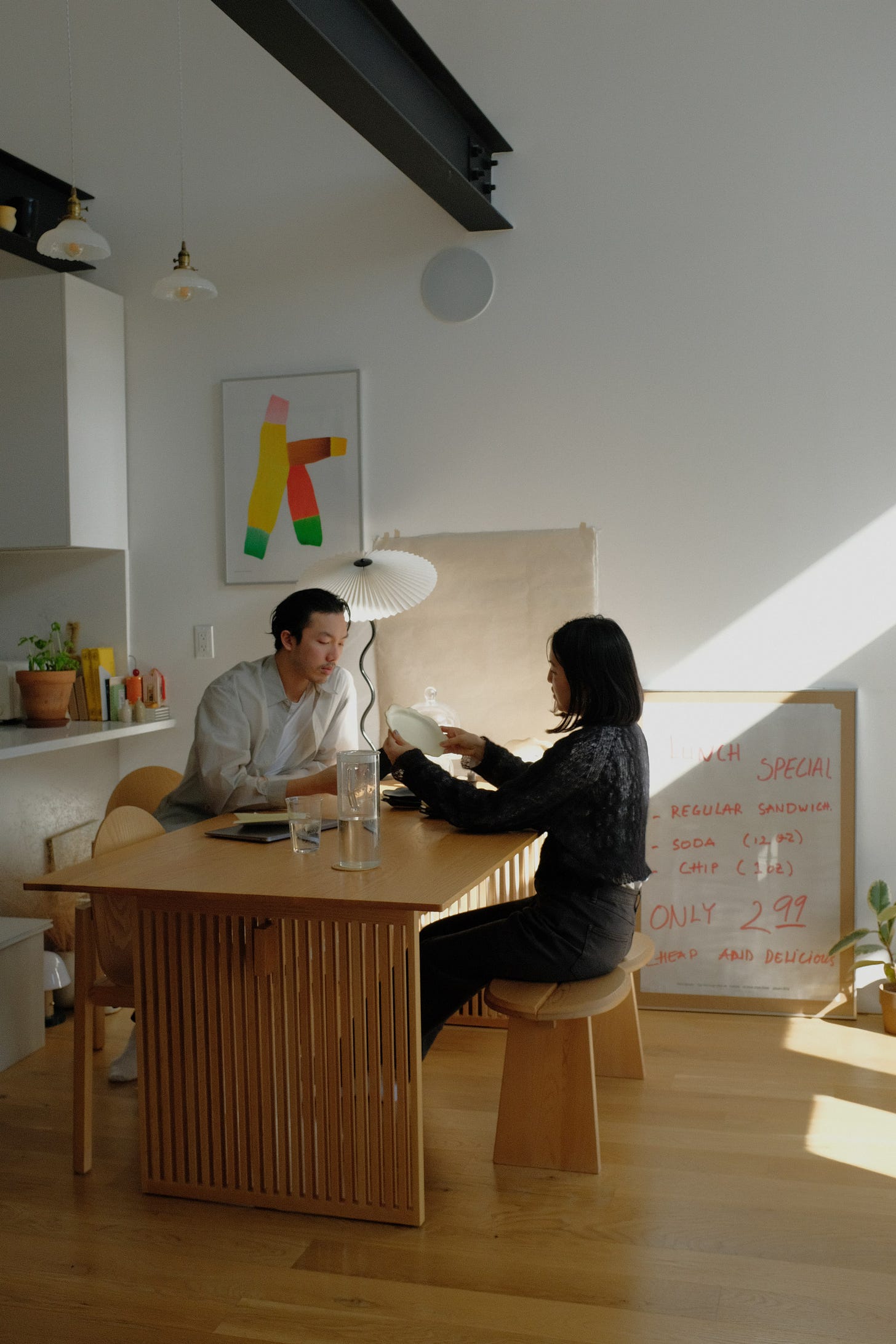#16 Object Talks: s-u-m studio bakes
Brooklyn-based designers Sebit Min and Andrew Teoh exploring more tactile mediums
Objectively is a weekly series about our objects and the stories they tell. Leading with curiosity, the project views objects as an extension and embodiment of humanity, and hopes that exploring our relationship with them gives us new understandings of ourselves.
Object Talks is a sub-series on conversations with creatives who work with objects—such as makers, collectors, and curators—about their practice.
For today’s Object Talks, I got to interview Sebit Min and Andrew Teoh on their collaborative practice s-u-m, which sees them experimenting with more tactile ways of making.
At the cusp of launching their first collection and “bake sale” (this weekend!), we discuss what it’s like to go into something new after a decade in the graphic design industry, why they’re taking the leap to launch, and who inspires them.
s-u-m is the Brooklyn-based studio of designers Sebit Min and Andrew Teoh. Established in 2021, they are just about to launch their first collection of baked goods and wares.
Hey Sebit and Andrew, can you share a bit about how you two work together on s-u-m?
Sebit: We founded s-u-m with an intent to explore other mediums outside of our day-to-day job as graphic designers, stemming from a desire to break out of the screen and build something tangible from start to finish. We share a love of working with our hands and creating beautiful, functional objects. My focus has been ceramics…
Andrew: … and mine has been baking. While the two may seem like totally separate things, we've realized how alike the two processes are—from kneading the dough or wedging clay, to shaping ceramic pieces or decorating cakes on a wheel. And once they go in the oven or the kiln, it's beyond our control and we can only pray for the best.
Sebit: We're always looking for ways to find common ground and create a cohesive vision with our work, such as making ceramic pieces that compliment the baked goods, and vice versa.
How does your grounding in graphic design influence your work for s-u-m?
Andrew: Coming from that shared background, we obviously care a lot about the aesthetics of our work, from the shape and composition to the color choices, and it’s almost second nature for us to apply those skills and sensibilities towards the things we make. The design of Sebit’s ceramic pieces, the scoring on a bread loaf, or the decorations on a cake—they all require a keen sensibility and attention to details.
Sebit: Then there’s the photography and documentation of our creations, and the overall art direction of it. We always joke about how making the actual thing is only half the journey and the rest is a whole other hurdle, but thankfully since we have total creative freedom, we try to have a lot of fun with it.
Scrolling back a bit, I see that Sebit you’ve dabbled in knitting too. What do you both find enticing about working across disciplines, especially with tactile ones?
Sebit: When making something by hand from start to finish, there’s just an innate, simple joy in being able to hold the final product and to share it amongst one another. There's also always an element of surprise and unpredictability that connect you more to the process. We might start out with a rough idea of what we want to create, but there are so many factors that come into play—the materials, your mood—that often dictate the final outcome in unexpected and exciting ways. There is so much of a learning curve and every mistake is a lesson, and for me, the process is as enjoyable as the final outcome.
Can you take us through your process of creating for s-u-m — would you say it’s more idea-oriented or process-oriented, and why?
Sebit: For my ceramics pieces, it’s definitely more process-oriented, although it always starts with an idea. There are still very obvious limitations in my skill set and understanding of the clay medium, so I’m constantly hitting walls and having to pivot along the way. Hopefully over more time and practice, I’ll be able to execute from ideation to creation swiftly, but for now, it’s all trial and error.
Andrew: Baking is definitely also very process-oriented. Whatever cool idea I may have, I would still have to work around the chemistry and physics of baking. Some recipes require long hours of waiting, or others may require more speed and efficiency. It helps to think ahead and do some prep work, and also be patient and trust the process.
What are some of your inspiration behind your creations?
We’re always finding inspiration from the artistry and history of our Asian roots. From delicate porcelain ceramics of the Joseon dynasty to the beautifully minimal ink-wash drawings (水墨畫), these timeless traditions still hold up to this day.
We're also deeply inspired by the history and evolution of Asian baking, like the beautiful presentation of Japanese bakeries to the bold textures and flavors of Chinese baking. It’s also exciting to see traditionally western recipes being reinvented and reinterpreted with eastern flavors.
Sebit, you talk about a wobbliness in describing your pieces—"still wonky, still a bit imperfect, but falling in love with the wobbliness of it all.” Why do you think you, and perhaps others, are drawn to this imperfection?
Sebit: For me, I feel that the wobbliness, the roundedness and asymmetry of a piece, gives it a sort of tenderness. It also ascribes it an individuality that makes it all that more special and unique, which in turn, affects how we interact with it. It is obviously not perfectly round, smooth, or level, and that is a more apt reflection of us and the world we live in.
How do you think this relates to what you’ve in mind for the s-u-m brand?
Sebit: Absolutely. We’ve been in the design industry for about a decade at this point, and the entire process was all about trying to present the sleekest, best portfolio, the coolest version of yourself. The foray into s-u-m is being content with being a bit of a novice, a bit clumsy, and being able to share the joy of learning and growing.
Having started the studio for a while, you’re just about to launch the first collection… Why now? What can we look forward to?
Sebit: If the past year or so has been time for exploration and development, we feel like we've finally arrived at a point where we should take a leap, and share our work with a wider audience, outside our immediate friends and family. It was more like a natural progression of things, rather than being a calculated decision on our part. It's exciting and nerve-wrecking to see people’s responses to our work, but I think we will learn a lot from this experience.
We'll be hosting a bake sale—of baked goods and baked wares—where we'll share roughly 60+ ceramic pieces from my “Spring” collection, as well as one-off sample pieces. More information on each piece can be found on s-u-m.
Andrew: I will be selling my baked goods for the first time as well. There will be madeleines in a variety of flavors (earl grey, hojicha, and classic lemon), cake slices, as well as tomato and rosemary focaccia slices.
We definitely owe a lot of gratitude to our friends who've been the most encouraging and supportive throughout our journey. As hobbyists we were never comfortable with the idea of selling our stuff, and we believe that there’s still so much to be learned, but we’re always getting nudged to share them with the world. This should be a fun experience and will help push us into thinking about potentially building a business around it, albeit small.
Before you go, who’s another object-creator that you look to for inspiration?
Sebit: Na Kim is a creative powerhouse, a book cover designer extraordinaire, who just started her foray into the art world. Her paintings, her creativity, her energy, her sensibility is so captivating, refreshing and inspiring.
Andrew: Yip Studio has been creating some beautiful sculptural cakes. They look like rocks with flowers growing out of them, and come in all interesting shapes, sizes, and colors. It’s such a cool way to think about cake as a form, and a reminder to always look to nature!
Images courtesy of s-u-m (@s.u.m.studio). s-u-m is by @sebitmin and @andrew_teoh.
#17 next week is a Living with Objects feature with Sherry Zheng, a photographer living in Sydney.
Those blankets themselves don’t mean much, but once the memory was triggered, their absence was jarring.
Subscribe for free to receive it first in your inbox:





